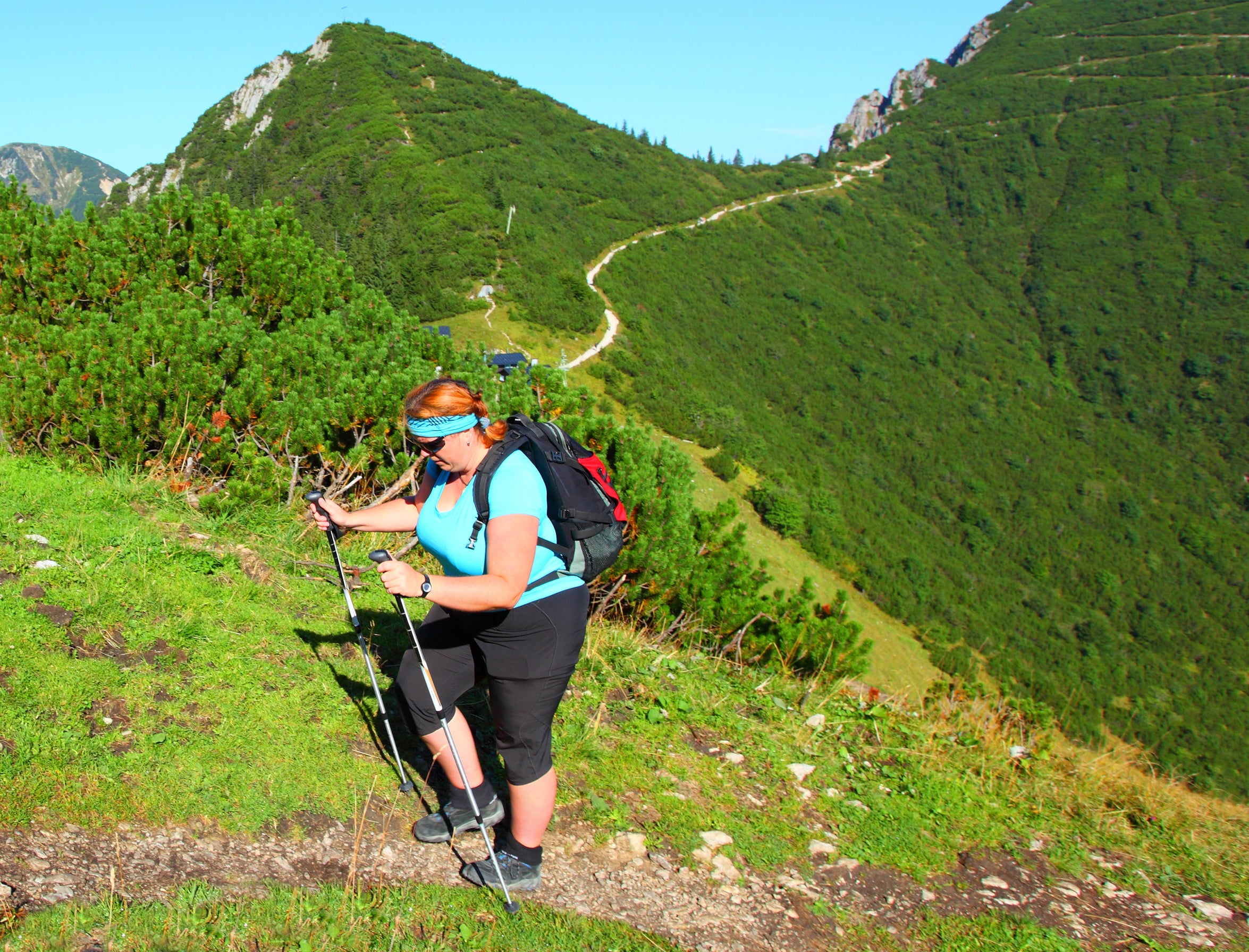It's Time for Outdoor Brands to Make Clothing for All Women

'Adobe Stock Photo'
Here’s the thing: I have a big butt. Most weekends find me using my big butt and big thighs to carry a big backpack up a steep trail. I am a licensed hiking and backpacking guide in New York, and I co-own Destination Backcountry, the largest guiding company in New York City. I haul loads in excess of 50 pounds along the trail so that my clients have everything they need to have a memorable outdoor experience. Simply put, I’m a professional outdoorswoman, and have been for six years.
So why in the world can I not find a pair of hiking pants that fit?
A quick scroll through the Instagram feeds of major brands like Patagonia and REI answers that question. Where in the world are these girls hiding in the woods? Like magical nymphs, they are always skinny and free of dirt, sweat, and grime, with their hair in a perfect messy bun. With my sturdy legs, wide hips, and strong core, I have a body literally built for—and by—backpacking. But I typically order my hiking pants 1-2 sizes up from my regular size, and sometimes they still don’t fit. The message these pants send me is that, in spite of all the places my legs take me, I still don’t belong.
Sure, we’ve come a long way from the days (which were actually not so long ago) when every outdoor-oriented ad showed a woman sitting in a camp chair or tent nursing hot cocoa while her male companion tended the fire. I appreciate REI’s Force of Nature commitment (other retailers could take a tip here, though Marmot is truly leading the way), and I do see plenty of images of women taking on big peaks and hanging from rock walls.
But we still have a long way to go towards true inclusiveness in the outdoors—especially with regards to representation of BIPOC hikers—and the continuing excuses are disappointing.
While Patagonia now offers an extended size section, with an underwhelming four styles of hiking pants, the fact remains that every company needs to offer clothes that fit a variety of body shapes and sizes, not just the same straight-leg styles made slightly bigger. If creating a new product takes “months,” according to REI, then why not work with activewear companies that are already creating these clothes, like Sportive Plus and Alpine Curves? Plus, depicting women of all shapes, sizes, and colors in marketing materials and on social media takes zero product development, and brand ambassadors take only a few Instagram searches to find.
As a female guide in a male-dominated industry, I see the importance of representation every time I step on the trail. Our company has eight lead guides, half of which are women. When I joined Destination Backcountry six years ago, they were all men. In those days, the women who came on our trips would thrive on the trail, actively leading the front of the group, only to shy away from learning backcountry skills in camp, like chopping wood and fire building. With a female lead guide, women don’t hesitate to pick up a saw or hatchet: No outdoor skills seem unattainable to them. Yet when it comes to clothes, outdoor brands would have many of these women believe that only one type of woman can #optoutside.
I am lucky to guide trips primarily for New Yorkers, which means I hike with women from all walks of life. Of course I love the skinny women who come on our trips, but I equally love and celebrate the many women whose bodies have hips that curve and thighs that thump like mine. I wonder how many first-time women hikers never make it to the trailhead after venturing into outdoor retailers, only to leave with the understanding that the outdoors are not for them, just as they suspected.
As our industry finally begins to acknowledge that that diversity, inclusion, and equality are not a given in any space—especially the outdoors—we need to evaluate every way we create barriers. Access to proper clothing and gear is one important place where this starts. Depicting all types of women enjoying the outdoors is another. Here’s a tip for outdoor brands: Women of all races, ages, and sizes like to canoe, forest bathe, climb, and hike—sometimes gently and sometimes epically. (An aside: Not all of us like to wear purple, pink, or teal.)
More people than ever are visiting national and state parks and exploring the outdoors for the first time. As an industry, we have an opportunity to redefine how we market to and represent our community. Our response will speak volumes about where we stand. Are we willing to let go of our limited view of who is able to—and allowed to—appreciate nature? Any company claiming to believe in the importance of protecting the environment must also acknowledge that the outdoors should be an accessible, healing place for every person. That starts with making clothing that makes all women feel they are welcome there.
Jessica Tackett is a hiking and backpacking guide in New York State and co-owner of Destination Backcountry.